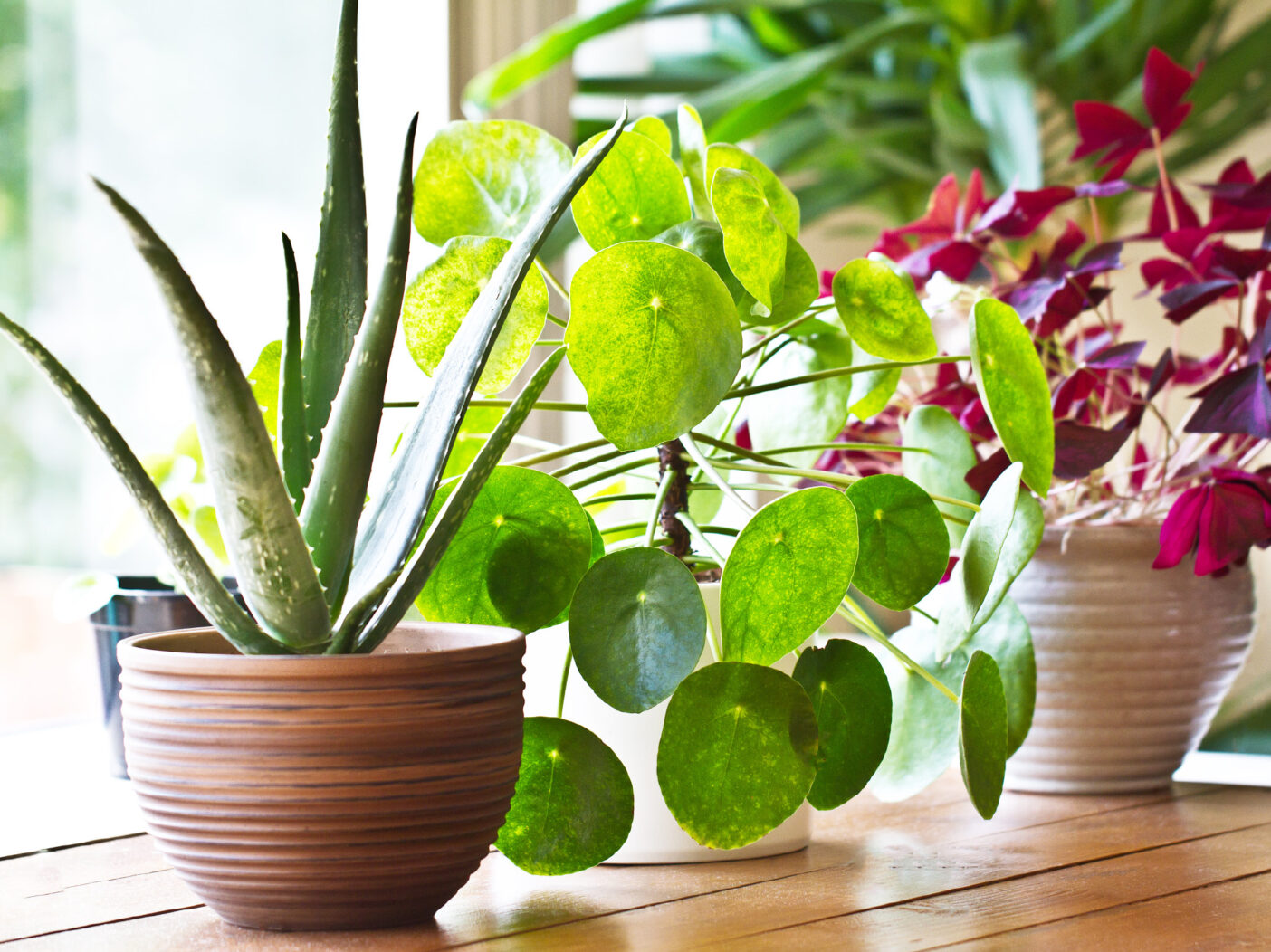
Houseplants are a fun, rewarding way to get some green into your life if you rent, have a strict HOA, have a small outdoor space, or just love being around plants 24/7. They can be relatively easy to maintain if you stick to a few basics.
Your very first step is to identify your window directions. For “directionally challenged” individuals such as myself, a Google Maps search of your property will allow you to double-check your home’s compass points.
That information is so important because the rule of windows is this:
- South-facing windows receive the most light and are the hottest.
- North-facing windows receive the least light and are the weakest and coolest.
- East-facing windows receive light in the morning and are weak and cool.
- West-facing windows receive light in the afternoon and are strong and hot.
 Now, what does that all mean? At the Garden, we have a motto, “right plant, right place,” when determining where to grow our plants. This rule rings true to indoor plants as well.
Now, what does that all mean? At the Garden, we have a motto, “right plant, right place,” when determining where to grow our plants. This rule rings true to indoor plants as well.

SOUTH: Take a trip in your mind’s eye to the Foster Succulent Garden, and look around. Lots of, you guessed it, cactus and succulents! Just as we selected a bright, sunny spot for them in the Garden, you’ll want to place them in your brightest, hottest windows: your south-facing ones. Generally, plants that are heavy bloomers also like high light—think of all those annuals planted just outside of Fogg Café. They are all in full sun. Anything that demands high light will perform the best in a south-facing window.

NORTH: Now, move your mind back to the entry of the Garden, to Kathryn’s Garden, Irma’s Garden, and the Kapnick Brazilian Garden. You can even go to the darker, shadier parts of the Lea Asian Garden. Think about the herbaceous level of plants in all these gardens. You’ll notice a lot of foliage plants. Things such as begonias, cast-iron plants, dumb canes, calatheas, ferns, aroids of all shapes and sizes, and the list goes on. These plants will do best in low-light situations because that’s where they naturally occur! So, anything that demands low light will perform best in a north-facing window.

EAST: I urge you to stay where you are, but move to a slightly higher level in the canopy. The same plants that do well in north windows will do well in east windows. You can push the envelope a little bit, and put something that demands a little more light in an east-facing window, but generally, lower-light plants perform best in east windows.

WEST: Just as east- and north-window plants are compatible, so too are the west- and south-window ones. Plants that like full sun and the south-facing windows will generally do well in west-facing windows, too. But I would urge you to push the envelope a little with these, too! Plants that like mid-light will perform best in west-facing windows.
What about an area in your house that doesn’t have any windows? Can you bring some green in there? I would suggest not. You can supplement sunlight with some pretty decent grow lights (I have one to supplement one of my north-facing windows), but to maintain a healthy plant in conditions of just a grow light forever is not ideal. Instead, I would suggest adding greens to your interior spaces with cut palm fronds or sprigs of greenery. Even a fun botanical print can add green to a space that is unable to grow plants.
 About the Author
About the Author
Elizabeth Beans is the Horticulture Manager at Naples Botanical Garden. She is an Ohio native and has a degree in Botany and Environmental Science from Miami University, where she focused on marine and aquatic ecosystems. She lives in Bonita Springs on an acre with her husband, dog, and cat where she enjoys crafting, tending to her many houseplants, and working in her yard.


